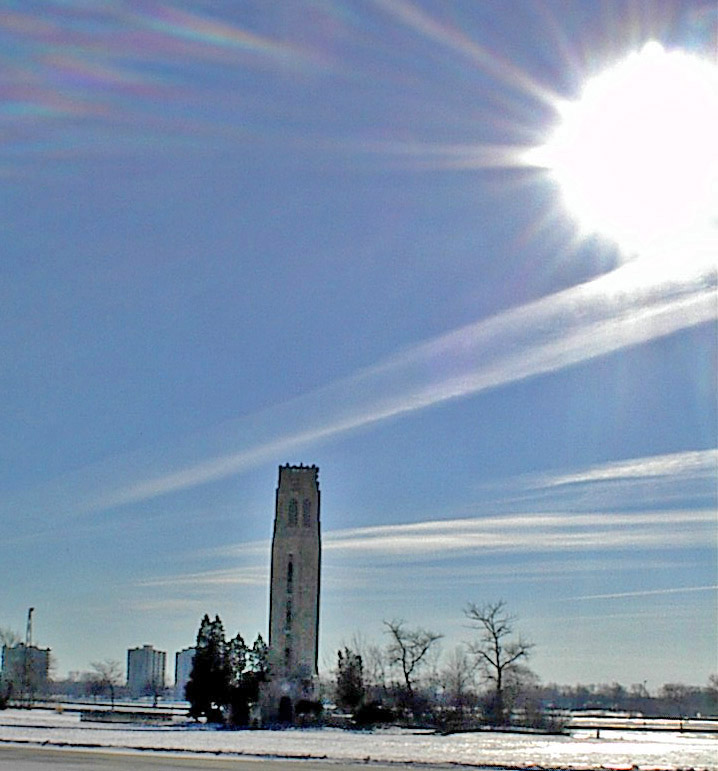

Born in Perry, Maine in either 1869 or 1870, Annie Louis Brown, attended secondary school in Massachusetts and then matriculated at Mount Holyoke College in 1888 and graduated four years later. She taught school in Vermont, Connecticut and in Mount Clemens, Michigan. In 1904 she married James Edward Leslie, the drama critic and Sunday editor of the Pittsburgh Dispatch. He died just 13 years later. To support herself, she went to work as a reporter for the same paper. Two years later at the age of 49, she moved to Detroit to begin writing an advice column for Mr. Scripps’ Detroit Evening News. She used the nom de plume of Nancy Brown and entitled her column “Experience.” This was one of the nation’s first personal advice columns, and quickly Nancy Brown became a popular figure in Detroit. In addition to offering advice, she wrote about life and living in the Motor City during its period of most rapid growth.
No one knew how extensive her following was until 1930. In November of that year, she described an impressive new exhibit at the then very young Detroit Institute of Art. It had yet to be graced with its national treasure: the Diego Rivera murals. She encouraged her readers to join her at the DIA in November, 1930, and more than 30,000 came. Her fans grew in number. In 1934, she accepted the suggestion of a reader and organized a sunrise service on Belle Isle. This quickly became an annual event, drawing more than 30,000 each year. In 1936—in the midst of the Depression that devastated and impoverished Detroit—she suggested that her readers donate their nickels and dimes so that a Peace Carillon could be built on Belle Isle where the sunrise services were held annually. They did so, and the very attractive Neo-Gothic tower that you see is the result of their generosity.
The cornerstone for this magnificent 85-foot tall edifice was laid in 1939. It was dedicated on June 17, 1940 when Nancy Brown addressed a crowd of her readers for the first time. She retired from writing columns for the Detroit Evening News in 1942 and died in Detroit in 1948 at the age of 78.
It is interesting and ironic to observe that this beautiful structure commemorating and reminding us of peace was built during the early years of World War II and was dedicated at the time when President Roosevelt’s Lend Lease program was finally pulling Detroit out of the tragic Depression for good. In the 1840s, the federal government built Fort Wayne, just four miles south of the Nancy Brown Peace Carillon, to protect this nation from a military invasion by the English. Late on a sunny afternoon today, the shadow from the Nancy Brown Peace Carillon points toward Canada and may commemorate 170 years of peace between the two nations that share the shores of what Antoine Cadillac called, without any imagination, the Detroit River.
Clarence E. Day designed the carillon beginning, apparently in 1936. He was the brother in law of James E. Scripps, the publisher of the Detroit Evening News. In 1937, Clarence Day joined with Alvin Harley and Harold Ellington to form the Harley, Ellington and Day architectural firm. Among their most impressive commissions are the University of Michigan’s Rackham Building in the Cultural Center, the Coleman Young Municipal Center at the corner of Woodward and Jefferson and the Veterans Memorial Building at 151 West Jefferson.
Architect: Clarence E. Day
Architectural style: Neo Gothic
Date of Construction: Cornerstone was laid in 1939; the carillon was dedicated
on July 17, 1940
Use in 2005: Peace Carillion
Photo: Ren Farley; January, 2004
Description edited: October, 2006
Website: The papers of Anne Louise Brown are available at the Mount Holyoke
College Library should anyone wish to write a book about her and her contributions
to the Motor City. http://www.mtholyoke.edu/offices/library/arch/col/msrg/mancol/ms0679r.htm
City of Detroit Local Historic Districts; Not listed
State of Michigan Registry of Historic Sites: Not listed
Federal Registry of Historic Sties: Note listed